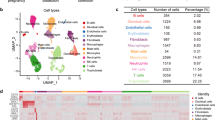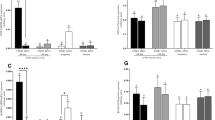Abstract
THE principal oestrogen secreted by the ovary of the non-pregnant ewe is 17β-oestradiol1. After continuous infusion of 3H-17β-oestradiol into both pregnant and non-pregnant sheep, oestrone and 17α-oestradiol have been isolated from blood as the chief unconjugated radiometabolites2,3. In pregnancy, oestrogens are excreted in urine as oestrone and 17α-oestradiol conjugates4, but calculation of blood steroid concentration from these data4 and from the metabolic clearance rate of 17β-oestradiol2 suggested that the circulating concentration of 17β-oestradiol in the pregnant sheep would be extremely small (<20 pg/ml. of plasma). Measurements, therefore, of this steroid in circulating blood of the sheep have not been reported, and the role of oestrogens in late pregnancy and parturition has not been defined clearly. Because a decreasing progesterone block on the myometrial contractile response to oxytocin cannot always account for the onset of parturition5, it has become increasingly important to establish any significant changes in oestrogen biosynthesis in late pregnancy. I wish to report a rapid ten-fold increase in the maternal circulating oestrogen on the day before parturition in the sheep, which could provide a positive trigger for the onset of labour.
This is a preview of subscription content, access via your institution
Access options
Subscribe to this journal
Receive 51 print issues and online access
$199.00 per year
only $3.90 per issue
Buy this article
- Purchase on SpringerLink
- Instant access to full article PDF
Prices may be subject to local taxes which are calculated during checkout
Similar content being viewed by others
References
Baird, D. T., Goding, J. R., Ichikawa, Y., and McCracken, J. A., J. Endocrinol., 42, 283 (1968).
Challis, J. R. G., Harrison, F. A., and Heap, R. B., Biochem. J., 118, 11P (1970).
Challis, J. R. G., Harrison, F. A., and Heap, R. B., J. Physiol., 210, 93 (1970).
Fèvre, J., Piton, C., and Rombauts, P., CR Acad. Sci., 261, 2517 (1965).
Porter, D. G., in Progesterone: its Regulatory Effect on the Myometrium, Ciba Foundation Study Group No. 34 (edit. by Wolstenholme, G. E. W., and Knight, J.), 79 (London, Churchill, 1969).
Caldwell, B. V., Scaramuzzi, R. J., Tillson, S. A., and Thorneycroft, I. H., in Immunological Methods in Steroid Determination (edit. by Peron, F. A., and Caldwell, B. V.) (Appleton-Century-Crofts, New York, in the press).
Bassett, J. M., Oxborrow, T. J., Smith, I. D., and Thorburn, G. D., J. Endocrinol., 45, 449 (1969).
Roberts, J. S., and Share, L., Endocrinology, 84, 1076 (1969).
Kao, C. Y., in Cellular Biology of the Uterus (edit. by Wynn, R. M.), 386 (North-Holland, Amsterdam, 1967).
Liggins, G. C., in Foetal Autonomy, Ciba Foundation Series (edit. by Wolstenholme, G. E. W., and O'Connor, M.), 218 (Churchill, London, 1969).
Ainsworth, L., and Ryan, K. J., Endocrinology, 79, 875 (1966).
Author information
Authors and Affiliations
Rights and permissions
About this article
Cite this article
CHALLIS, J. Sharp Increase in Free Circulating Oestrogens Immediately Before Parturition in Sheep. Nature 229, 208 (1971). https://doi.org/10.1038/229208a0
Received:
Revised:
Issue date:
DOI: https://doi.org/10.1038/229208a0
This article is cited by
-
Evolution of Gene Expression in the Uterine Cervix related to Steroid Signaling: Conserved features in the regulation of cervical ripening
Scientific Reports (2017)
-
miR-144 and targets, c-fos and cyclooxygenase-2 (COX2), modulate synthesis of PGE2 in the amnion during pregnancy and labor
Scientific Reports (2016)
-
MicroRNAs—mediators of myometrial contractility during pregnancy and labour
Nature Reviews Endocrinology (2013)
-
Local paracrine effects of estradiol are central to parturition in the rhesus monkey
Nature Medicine (1998)
-
Production of premature delivery in pregnant rhesus monkeys by androstenedione infusion
Nature Medicine (1996)



